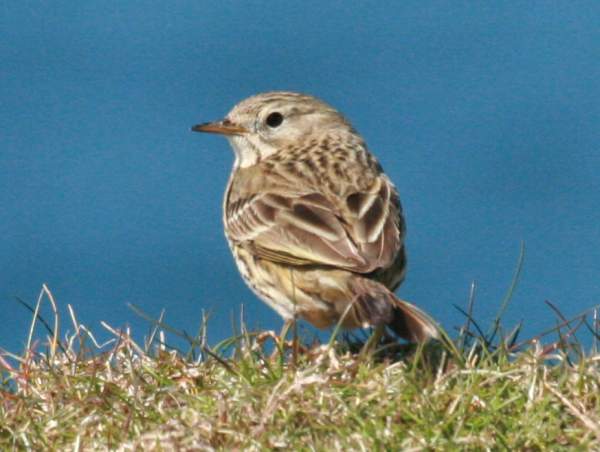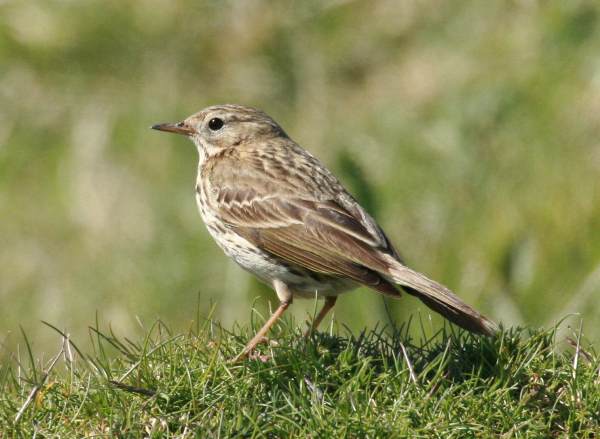Trees Birds Mammals Fish Amphibians Reptiles
Wild Algarve
Bookshop
Anthus pratensis - Meadow Pipit
Phylum: Chordata - Class: Aves - Order: Passeriformes - Family: Motacillidae
Identification - Distribution - Lifecycle - Food - Predators - Reference Sources

The Meadoiw Pippit, a resident in Britain, is a common summer sight on moorlands and on some inshore islands such as Skomer. Its common name derives from its call: 'tsi-tsi'.
Identification
At barely 15cm in length and weighing typically 15 to 20 grammes, when seen on the ground the Meadow Pipit is rather an undistinguished bird. It is mainly brown above, with some darker streaks, and buffish below with scattered darker spots. The brown tail is brown, has narrow white edging, and its bill is relatively narrow - much narrower that that of the otherwise somewhat similar Tree Pipit. The pinkish-yellow legs help distinguish this species from Rock p\ipit, which has blackish legs.

Distribution
These charming little birds are resident throughout most of southern and central Europe, including Britain and Ireland. Elsewhere in Europe, Meadow Pipets migrate, breeding for example in Scandinavia during the summer but spending the cold winter months much further south in Iberia, the Mediterranean and northern Africa.
Lifecycle
Usually favouring the concealment of tussocks of vegetation on the ground, Meadow Pippets are also known occasionally tonest in trees or on cliff ledges. Typically three to five whitish eggs, blotched with brown, are laid in each of typically two broods per year, and the chicks fledge within a fortnight.
Meadow Pipits in Britain and central mainland Europe leave the uplands and move to lowland areas such as farmland and saltmarshes.
Food
Meadow Pipits feed mainly on small invertebrates, including insects such as flies and beetles, but they will also eat spiders and small worms. During autumn and winter, where insects are less plentiful, these birds will also eat small seeds and berries.
Conservation
In the UK, the Meadow Pipit is classified as Amber under the Birds of Conservation Concern 4 - the Red List for Birds (2015). This species is isted as 'Near Threatened' on the global IUCN Red List of Threatened Species.
Predators
The natural lifespan of a Meadow Pipit is rarely much more than three years. Cuckoos often take advantage of these little birds, laying their eggs in a Meadow Pipit's nest, where the larger hatchlings evict the tiny pipit babies. Moorland avian predators such as Merlins and Hen Harriers are also partial to a meal of Meadow Pipit.